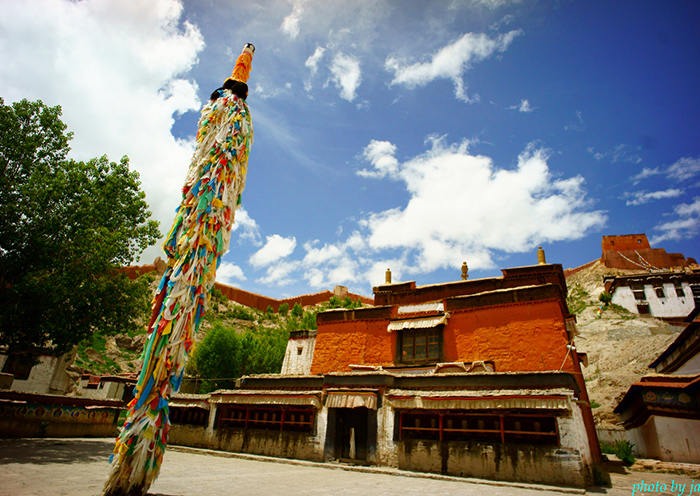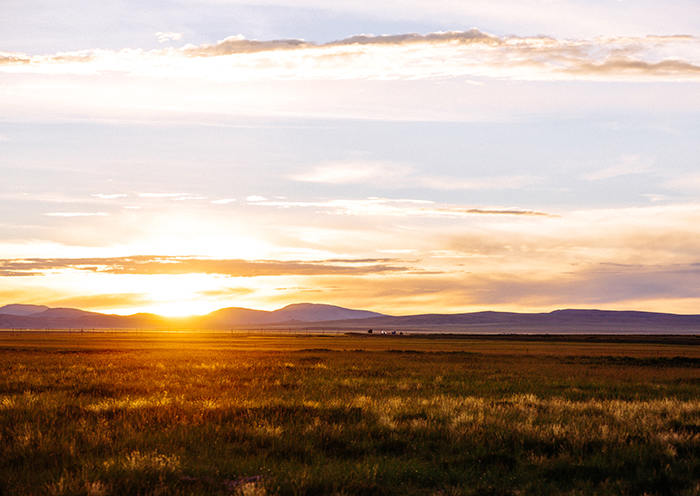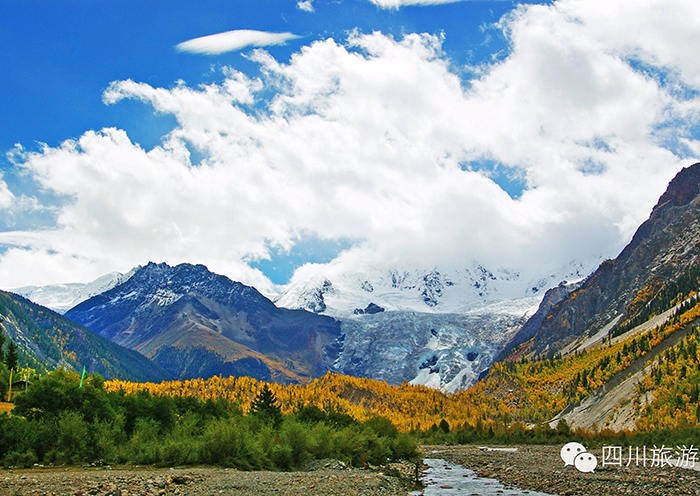Welcome to the roof of the world! You will be picked up by local tour guide at the airport hall or train station, and then be escorted to your hotel in Lhasa city in a private vehicle.
After arrival at your hotel, the rest of the day is free for you to explore the local areas and acclimatize yourself to the air, temperature and high altitude of Lhasa.
High Altitude Acclimation Tips: 1) go for some leisure walking to acclimate the high altitude but avoid strenuous activity after arrival; 2) you’d better not have bath, in case of catching a cold; 3) drink more water, and have some fruit; 4) have a good rest.
Accommodation:Overnight in Lhasa
Start today’s Lhasa exploration with an exciting visit to the landmark - Potala Palace which is regarded as one of the most beautiful architectural building in the world. You will climb up the palace along the zigzag stone paths with white-and-red walls to the top of the palace where you can not only appreciate the exotic Tibetan-style architecture, but also get a great view of Lhasa’s urban areas, then walk into the inner space of Potala Palace to explore the stately chapels and learn about the history of the palace.
Continuing your exploration, you will then get to Jokhang Temple which is considered as the spiritual heart of Tibetan Buddhism. Each day, there are thousands of pilgrims coming from different places in Tibet to the temple to worship to the Buddha. This temple is also known as the “house of Buddha” because it keeps the precious Jowo Rinpoche, the life-sized (5 foot/1.5m) image of the Shakyamuni at the age of 12. The last site for today’s exploration is the famous Barkhor Street. It is a circular and wide street encircling the Jokhang Temple. The local people like to walk on the street for several circles usually in the late afternoon as a daily tradition of pilgrimage. The street also has many shops selling a wide variety of traditional Tibetan goods, religious items and handcrafts.
Tips of Today: 1) there are 1,080 steps up to climb to the top of Potala Palace, so don’t walk in a rush, which may cause high altitude sickness; 2) taking photos is not allowed inside the palace; 3) today you will be mainly outside, please bring some water, a hat, sun cream, and sun glasses with you.
Accommodation:Overnight in Lhasa
After breakfast, you will firstly go to visit the beautiful Norbulingka which used to be the former summer palace of Dalai Lamas in the ancient time, and now is a public park. It is famous for its Potrang, the private palaces of former Dalai lamas with grandiose Tibetan architecture style. Next, drive several kilometers to the western outskirts of Lhasa to visit Drepung Monastery. Drepung, in Tibetan, means “prosperity”. Since its establishment, Drepung Monastery has always been one of the most important Buddhist monasteries in Tibet. In its heyday, there were more than 10,000 monks lived and studied in the monastery. Throughout its history, many important and famous Tibetan leaders used to study here, especially the Dalai Lamas. So Drepung Monastery is also respectfully known as the “Mother School of Dalai Lamas”.
In the afternoon, you will be taken to another famous monastery in Lhasa - Sera Monastery. It is famous for the spectacular “Buddhism Debating”. As a daily routine, the monks gather in a courtyard, and debate on the Buddhist doctrines with supplemented gestures, which is thought to be helpful to facilitates better comprehension of the Buddhist philosophy to attain higher levels of study. After enjoying the "Buddhism Debating", you will be transferred back to the city. The rest time is your own free time to rest.
The Etiquette of Visiting Monastery: 1) you shouldn’t wear short and uncover shoulders; 2) taking off your sunglasses and hat before entering the chapels; 3) taking photos is usually not allowed inside the chapels.
Accommodation:Overnight in Lhasa
Today, you will leave Lhasa and drive about 8 hours to Shigatse, the second largest city in Tibet. It may be a long journey, but there are many things to do along the road. The first site you will reach is the holy Yamdrok Lake (altitude: 4,400m). As the largest fresh lake in the northern of the Himalaya Mountains, it spreads about 675 square meters from south to north, like an eardrop lying in the arms of snow-capped giant mountains. Viewing from a distance, you can see fertile pastures full of yaks and sheep, and some small Tibetan villages along the lakeshore. Keeping driving not so far from Yamdrok Lake, you will see the imposing Karola Glacier (altitude: 5,045m) towering aloft on the right side of the road.
Continuing your trip, you will get to the historical city of Gyantse. Feel hungry? Have a good lunch in the town, then go to visit the mysterious Palcho Monastery (altitude: 4,040m). The monks and tradition of three important sects of Tibetan Buddhism - Sakyapa, Zhalupa and Gelukpa, peacefully coexist in this monastery. Its Kumbum, which is 35 meters high and has 76 small chapels with hundreds images of Kriyatantras , is believed to be the largest such structure in Tibet.
After the Gyantse sightseeing, keep drive about 3 hours, you will arrive at your hotel in Shigatse (altitude: 3,800m). Have a good rest!
Tips of today: 1) wear warm clothes to prevent from cold and wild; 2) pack some food and drinks with you because you will spend much time on the road.
Accommodation:Overnight in Shigatse
Today, before you driving Mount Everest, you will firstly take a visit to the official seat of Panchen Lama - Tashilhunpo Monastery which is also the largest and most influential Gelug Monastery in Shigatse prefecture. Here you will see a giant statue of Future Buddha, the largest one of its kind on earth ( 26.2 meters high and 11.5 meters wide ), decorated with precious pearls, turquoises, corals and ambers.
Then, you will leave Shigatse for the final destination of your Tibet trip - Mount Everest. Though being a long driving of about 7 hours, but the views along the road are stupendous. In clear days, you can see the clear face the Himalaya range including several famous peaks over 8,000 meters, such as Makalu, Lhotse, Gyachung and Cho Oyu. When you finally get to the Rongbuk Monastery (altitude: 4,980m), and get the first sight of the mighty Everest, you will immerse in a solemn ethereal mood and find all the efforts you have made along the long way are not in vain. Located about 5100 meters above the sea level, Rongbuk Monastery is the highest monastery in the world. It is the best location to take some great photos of the front face of Mount Everest. The rest of today is free for you visit the Rongbuk Monastery and explore surrounding landscape.
Accommodation: if you visit Mount Everest during off season (November to April), you will accommodate at Rongbuk Guest House near the Rongbuk Monastery; if you visit Mount Everest during the peak season (May to October), you will accommodate at the Tibetan Tents Camp which is about 4km further from Rongbuk Monastery. Please note that the accommodation at both places is very simple and basic, only dorm beds with communal squat toilets are available. Duvets, heated blankets and hot water will be provided, and you are suggested to bring your own sleeping bag and toilet paper. There is no running water, sinks or showers. The dining room just offer basic breakfast and dinner without menu. Remember to dress warmly all the time.
Tips of today: 1) prepare more food and drinks for long driving; 2) bring a warm and thick coat for low temperature in Everest; 3) avoid strenuous activity to prevent from high altitude sickness.
Accommodation:Overnight in Mount Everest
Wake up early to enjoy the marvelous sunrise on the peak of the world. Then drive about 4km further to Tibetan Tents Camp (altitude: 4900m) where you can enjoy a closer view of Mount Everest.
The top part of the Mount Everest is always covered by snow all the year round, and when the sun shines on the mountain, the peak is like a giant white pyramid, which is one of the most famous sceneries of Mount Everest. In bright days, you can also see a wisp of cloud hanging above the top of Mount Everest. It flies eastward in the fast western wind just like a flapping flag. This unique phenomenon is the spectacular “Cloud Flag”. The cloud will change from surging waves into a thin cooking smoke or from galloping steeds into the mysterious veil of a goddess.
Lastly, you will leave for next destination - Saga County. About 8 hours driving may be long and tough, but the landscape you can enjoy on route is fabulous - witness the dominating snow peak Shishapangma from afar, get shocked by desolate and wild plains, enjoy the pure scenery of the Pelkhu tso Lake (4600m)...
Tips of today: 1) to protect the environment of Mount Everest, currently Everest Base Camp is not open for tourists – the Everest landscape can be enjoyed at Rongbuk Monastery and Tibetan Tent Camp as well. The base camp marker, a tablet reading “Mt. Qomolangma Base Camp” has been transferred to the Tibetan Tent Camp. You are suggested to take a photo at the marker to commemorate your wonderful adventure tour; 2) the sunrise usually starts around 6:30 am to 7am on Mount Everest; 3) keep warm all the time.
Accommodation:Overnight in Saga
After breakfast, you have to take another long driving about 550km from Saga to Darchen (4,575m), a small village located as the starting point of the walking kora of the holy Mount Kailash. During the auspicious pilgrimage times, Darchen will be flooded with Pilgrims with hundreds of tents all over the small village.
Accommodate at local guesthouse in Darchen.
Accommodation:Overnight in Darchen
Trekking Time: 5-6 hrs, 20km
Trek from Darchen (4,560m) to Dirapuk Monastery (4,750m). The trek is a gradual walk in the clockwise circuit at the average altitude of more than 4,700 meters. You will be accompanied by many local Buddhist pilgrims also walking the same kora. If you meet people who come the anti-clockwise direction, don't be surprise, they are Bon pilgrims. You will stop at the Tamdin (4,780m) for lunch and hot water supply. Then keep trekking 4km to the final destinations of today - Dirakpuk Monaster. This section of trekking boasts some of the best scenery of the entire kora.
Accommodate at Dirapuk guesthouse.
Accommodation:Overnight in Dirapuk
Trekking Time: 6-7 hrs, 18km
Trek from Dirapuk Monastery uprising 762 meters at altitude to Zutulpuk Monastery by crossing Drolma-la Pass (5,630m) before quickly descending to Dzutul-puk monastery (Dzutul-puk means "magical cave" in Tibetan).
Stay overnight at the tent guesthouse of monastery.
Accommodation:Overnight in Zutulpuk
Trekking Time: 3 hrs,11km
Wake up in the holy sunrise of Mount Kailash, after breakfast, you will trek back to Darchen. Todays' trekking is leisure and relaxing, which can be done in 3 ~ 4 hours. On route, explore the meditation cave of Milarepa, the famous Buddhist master and Yoga meditator. Surrounding the cave are many temples and shrines.
Once you exist from the valley, your driver will pick you up and transfer to visit the famous holy lake Manasarovar. Like Mount Kailash, Lake Manasarovar is a holy place of pilgrimage, attracting religious people from India, Nepal, the neighboring countries and Tibet. Believers bath in the Manasarovar Lake and drink its water are believed to cleanse all sins. Every summer, pilgrims from Tibet, India and Nepal cluster to make circumambulation and bathe in the lake. After that, they will return home and bring some samples of the holy water to family and friends as precious gifts.
Stay overnight in a local guest house near the Lake Manasarovar.
Accommodation:Overnight in Lake Manasarovar
Accommodation:Overnight in Saga
Today, you will drive about 4~5 hours from Saga County to Gyirong Town which is a small town near the border between Tibet and Nepal. It is a relatively short trip, but the views along the road are stupendous as well. As you reach Gyirong Town, you will have enough time to walk around and enjoy the surrounding landscape. It is also available to get some supplies of food and drinks for the next day’s driving journey.
Accommodate at Gyirong Town.
Accommodation:Overnight in Gyirong
Today, you will leave the territory of Tibet. Drive about 25km to the Gyirong Port where you will walk across the custom to Nepal territory and transfer to Kathmandu. It is expected to drive about 6~7 hours to Kathmandu from Gyirong Port, but some its needs more time because there is only one lane between Kathmandu and Gyirong Port and sometimes the traffic jam occurs.
Tips of Today: Our service will end at the border of Tibet and Nepal. If you want, we can also arrange the transfer from the border to Kathmandu for you with an extra charge.
Accommodation:

















































 Data in submission...
Data in submission...
